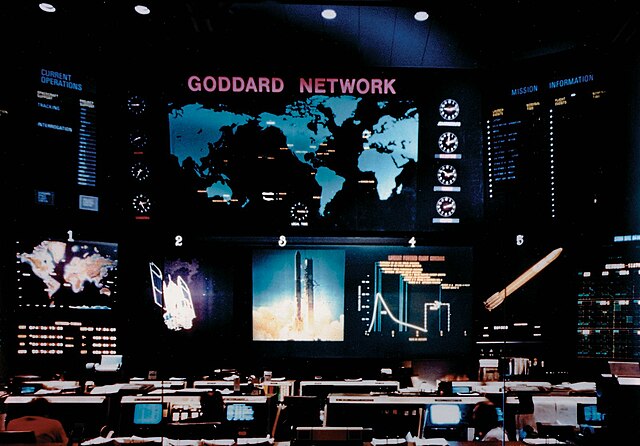Spacecraft Tracking and Data Acquisition Network
The Spacecraft Tracking and Data (Acquisition) Network was established by NASA in the early 1960s to satisfy the requirement for long-duration, highly available space-to-ground communications. The network was the “follow-on” to the earlier Minitrack, which tracked the flights of Sputnik, Vanguard, Explorer, and other early space efforts (1957–1962). Real-time operational control and scheduling of the network was provided by the Network Operations Control Center (NOCC) at the Goddard Space Flight Center (GSFC) in
Greenbelt, Maryland.
Orroral Valley STADAN control panel, at the National Museum of Australia
Goddard Space Flight Center
The Goddard Space Flight Center (GSFC) is a major NASA space research laboratory located approximately 6.5 miles (10.5 km) northeast of Washington, D.C. in Greenbelt, Maryland, United States. Established on May 1, 1959 as NASA's first space flight center, GSFC employs about 10,000 civil servants and contractors. Named for American rocket propulsion pioneer Robert H. Goddard, it is one of ten major NASA field centers. GSFC is partially within the former Goddard census-designated place; it has a Greenbelt mailing address.
Aerial view of Goddard Space Flight Center (2010)
The Goddard network (STDN) tracked many early crewed and uncrewed spacecraft.
James Webb Space Telescope mirrors assembled, May 2016
A cake model of the Hubble Space Telescope on display in the visitor center





